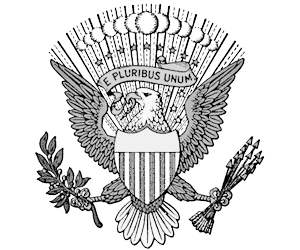|
|
|
|
|
An extension to the Clean Air Act was made in 1970, during the presidency of Richard Nixon aimed at phasing out leaded gas by the mid-1980s, and in the same year the Environmental Protection Agency (EPA) was formed. Amendments to the Clean Air Act in 1990, during the presidency of George H Bush focused on reducing air pollutant emissions and the continuing concerns about air pollution. Facts about
Clean Air Act Many events led to the passing of the Clean Air Act. Problems with pollution began with Industrialization in America which led to the rapid Urbanization of America creating cities with high pollution from the heavy, dense smoke from factories and poor sanitation due to untreated waste and raw sewage. The invention of the automobile created the demand for powerful cars and leaded gas (gasoline spiked with lead) was introduced in the 1920's to enhance engine performance. Incidents such as the 1948 Donora smog in the industrial town of Donora, Pennsylvania alerted the American public to the deadly effects of air pollution. The Air Pollution Control Act of 1955 was passed concerns began to rise about the effects of using pesticides. President Lyndon B. Johnson passed the Clean Air Act of 1963 to establish a federal program within the U.S. Public Health Service providing funding for research and the cleanup of air pollution. The Air Quality Act of 1967 was passed placing the primary responsibility of addressing air quality in the hands of local and state government, but not at a national level. The disastrous 1969 Santa Barbara oil spill inspired Senator Gaylord Nelson, Representative Pete McCloskey and environmentalist Morton Hilbert, to organize a massive demonstration on behalf of the environment which came to be known as "Earth Day" and there was a public outcry in favor of environmental reform. The overwhelming response to Earth Day put the subject of pollution and its effects on the environment on the political agenda and President Richard Nixon signed and extension to the Clean Air Act in 1970. The Clean Air Act of 1970 was designed to control air pollution on a national level and established National Ambient Air Quality Standards (NAAQS) to curb pollution. The Act of 1970 resulted in the establishment of the Environmental Protection Agency (EPA) on December 2, 1970. The Act of 1970 required that the EPA identified and set standards for pollutants identified as harmful to human health and the environment. 'Primary standards' set limits to protect public health and 'Secondary standards' set limits to protect the American public from contamination by pesticides to vegetation or farm crops. The Clean Air Act of 1970 required that the Environmental Protection Agency (EPA) set National Ambient Air Quality Standards (NAAQS) for six common air pollutants, (also known as "criteria pollutants"). The Six Common Air Pollutants are:
Air Pollution: Air Pollution is caused by activities such as driving automobiles, burning coal, oil, and other fossil fuels and manufacturing chemicals. Pollutants are known to harm health and the environment. Lead: The major sources of lead emissions are from the fuels used in cars and trucks. The widespread use of leaded fuels resulted in extensive environmental contamination that could harm the kidneys, liver, nervous system and other organs. Young children are particularly vulnerable to lead poisoning. Lead: The Clean Air Act of 1970 required a phase down of leaded gasoline phase down and was one of the most important environmental initiatives ever to be established. General Motors announced it would make the switch to cleaner gas by 1974 to meet the requirements of the Clean Air Act and the other major auto companies followed suit. Ground-level Ozone: At ground level, ozone is considered a major air pollutant and is the main component of smog. Ground level or "bad" ozone is not emitted directly into the air, but is created by chemical reactions between oxides of nitrogen and volatile organic compounds in the presence of sunlight. Ozone: Ozone exposure is especially dangerous for children and the elderly producing symptoms such as shortness of breath, pain during deep breaths, wheezing and coughing, effects are likened to "sunburn on the lung". Carbon monoxide: Carbon monoxide is highly poisonous gas that is formed by the incomplete combustion of carbon of fossil fuels such as coal, natural gas, petroleum and wood. Carbon monoxide can cause harmful health effects by reducing oxygen delivery to the heart and brain Nitrogen dioxide: Nitrogen dioxide is another highly poisonous gas produced by combustion of fossil fuels. Nitrogen dioxide forms quickly from emissions from cars and power plants and is strongly linked with a number of adverse effects on the respiratory system. Sulfur dioxide: Sulfur dioxide is a waste gas produced by burning coal and oil and by many industrial processes, such as smelting. It is linked with a number of adverse effects on the respiratory system. Sulfur dioxide is a hazardous air pollutant and a major contributor to acid rain. Particulate matter: Particulate matter are tiny, fine particles suspended in air many of which are hazardous to the environment. Particulate matter is a complex mixture of extremely small particles in soot, smoke, pollen dirt and liquid droplets with an aerodynamic size less than 10 micrometers. Amendments to the Clean Air Act in 1990 focused on further reducing air pollutant emissions and air pollution. In the 1990 law US Congress also recognized that Native American Indian Tribes have the authority to implement air pollution control programs. The Clean Air Act has helped to cut dangerous pollutants, clean-up air pollution phase out the production and use of chemicals that contribute to the hole in the ozone layer. Since 1980
|
| US American History |
| 1990 - Present: The Modern Era |
| EPA |
|
|
|
|
|
First Published2016-04-19 | |||
|
Updated 2018-01-01 |
Publisher
Siteseen Limited
| ||
|
|

